Introduction
The most common cause of heel pain is plantar fasciitis, which affects the bottom of the heel. Other alternative names include plantar heel pain, jogger’s heel or plantar fasciosis.
What are the symptoms?
- Sharp pain between your arch and heel, feels worse when you start walking or when stepping after getting out of bed and better when resting. Difficulty raising your toes off the floor.
Plantar Fasciitis
This band of tissue runs from the heel to the base of the toes. It acts like a rubber band to create tension and to maintain the arch of the foot.
When placed under too much stress the plantar fascia overstretches causing small tears in the tissue. This then results in pain within the fascia and surrounding tissues. These tears repair with scar tissue, which is less flexible than the normal fascia, and can cause tightness (Figure 1).
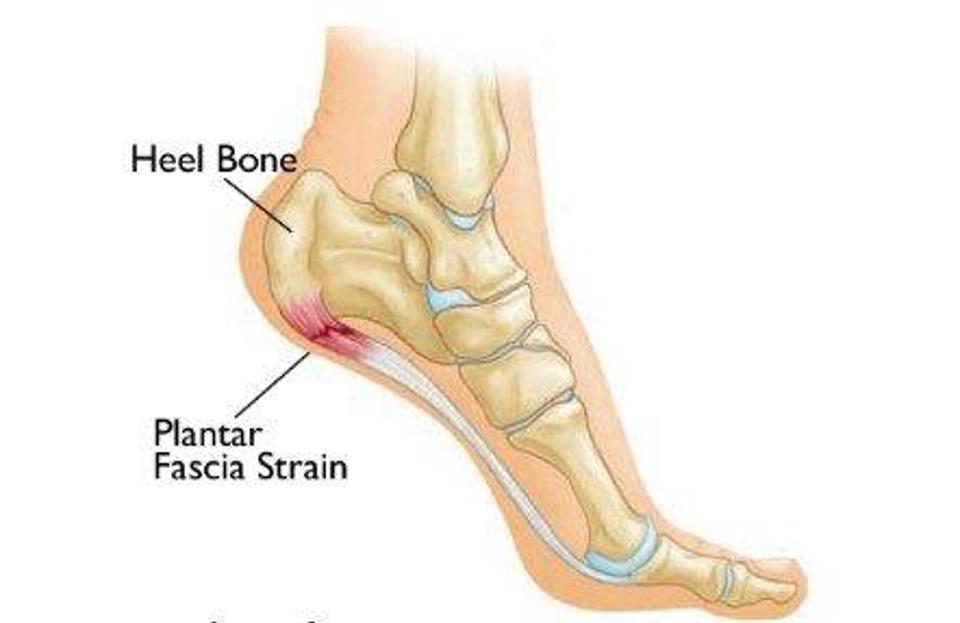
Figure 1: Plantar fascia strain
Common Causes:
There are a number of possible causes for plantar fascia strain:
- age, usually around 40 to 60 years
- recently started exercising on hard surfaces
- exercise with a tight calf or heel
- overstretch the sole of your foot during exercise
- recently started doing a lot more walking, running or standing up
- wear shoes with poor cushioning or support
- excess body weight
Treatment
Please remember: If you felt a sudden sharp pain in the calf or Achilles tendon and are unable to walk seek medical help. Otherwise act quickly to prevent it becoming a long standing problem.
Rest
Reduce all activities that cause pain. This includes running, high impact exercise and all forms of jumping.
Ice
Apply an ice pack to the plantar fascia wrapped in a damp towel for 10 to 15 minutes, twice a day.
An alternative way of using ice is to fill a plastic 500ml drinks bottle with water and then freeze it. Apply the ice by rolling the bottle under the foot with the layer of towel between the ice and the foot to avoid an ice burn.
Elevation
Wherever possible support the injured leg in a raised position a little height above the level of your heart is best for your foot. This will help the blood flow and reduce the swelling in the injured area.
Footwear
Shoes with a firm arch support and well cushioned shock absorbing soles are very important. This effect can be improved by using gel foot insoles. You may need specially fitted foot insoles. Insoles can correct any factors which are contributing to the cause of the problem. This would require help from a podiatrist (a person who specialises in foot problems).
Gentle stretching exercises

1. This exercise is aimed at stretching the plantar fascia. To begin place a towel around the ball of the affected foot, keep your heel in contact with the ground and avoid bending your knee. Pull the towel toward you until you feel the stretch in the bottom of your foot and back of your calf muscle. Hold the stretch for 20 seconds and repeat 3 times with a small rest period between stretches.
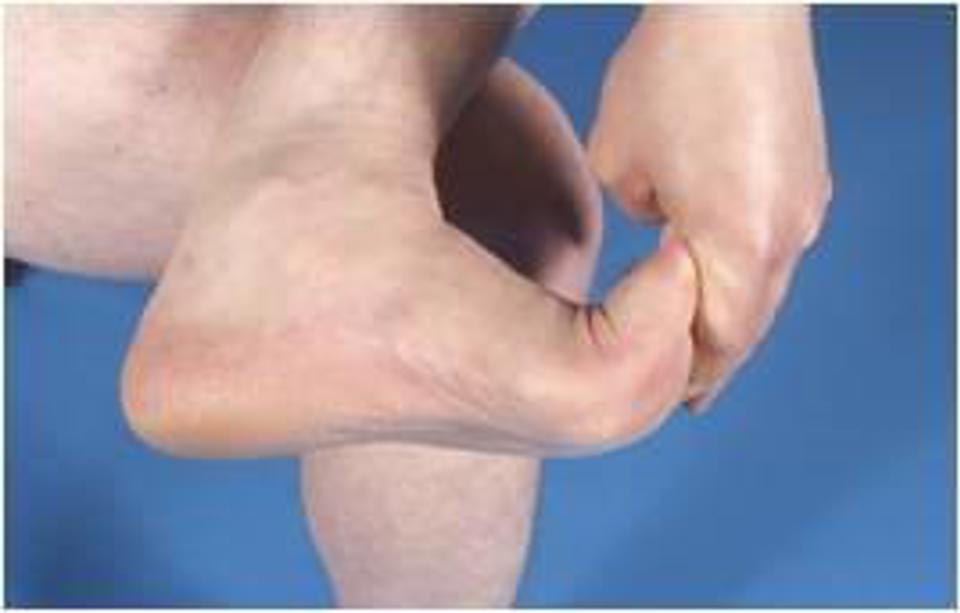
2. Sit and cross your affected leg over the other leg, holding your toes. Pull your toes, especially your big toe, back towards your shin until you feel a stretch in the arch of your foot.
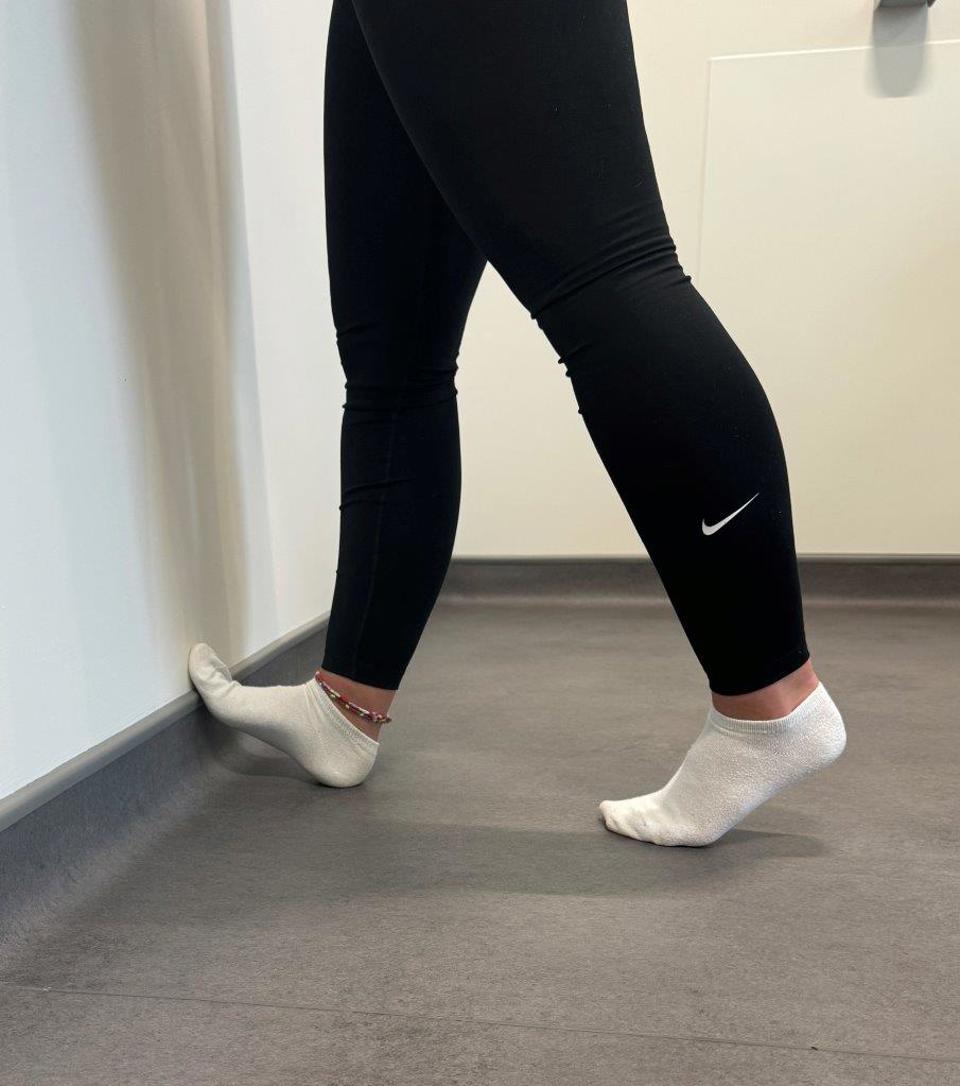
3. This exercise is aimed at stretching the plantar fascia as well as the calf muscle. Place your hands on a wall for support then wedge the toes of the affected foot against the wall with the foot angled at around 45 degrees. Keep the heel of the affected foot against the ground at all times. Now begin to bend the front knee whilst moving your body towards the wall until you feel a stretch in the back of your calf and bottom of your foot. Hold the stretch for 20 seconds and repeat 3 times with a small rest period between stretches. This stretch can be done with or without shoes on.

4. This exercise is aimed at stretching the calf muscle. Stand in a walking position with the leg to be stretched straight behind you and the other leg bent in front of you. Take support from a wall or chair. Lean your body forwards and down until you feel the stretching in the calf of the straight leg. Hold for 20 seconds and repeat 3 times with a small rest period between stretches.
Strengthening exercises
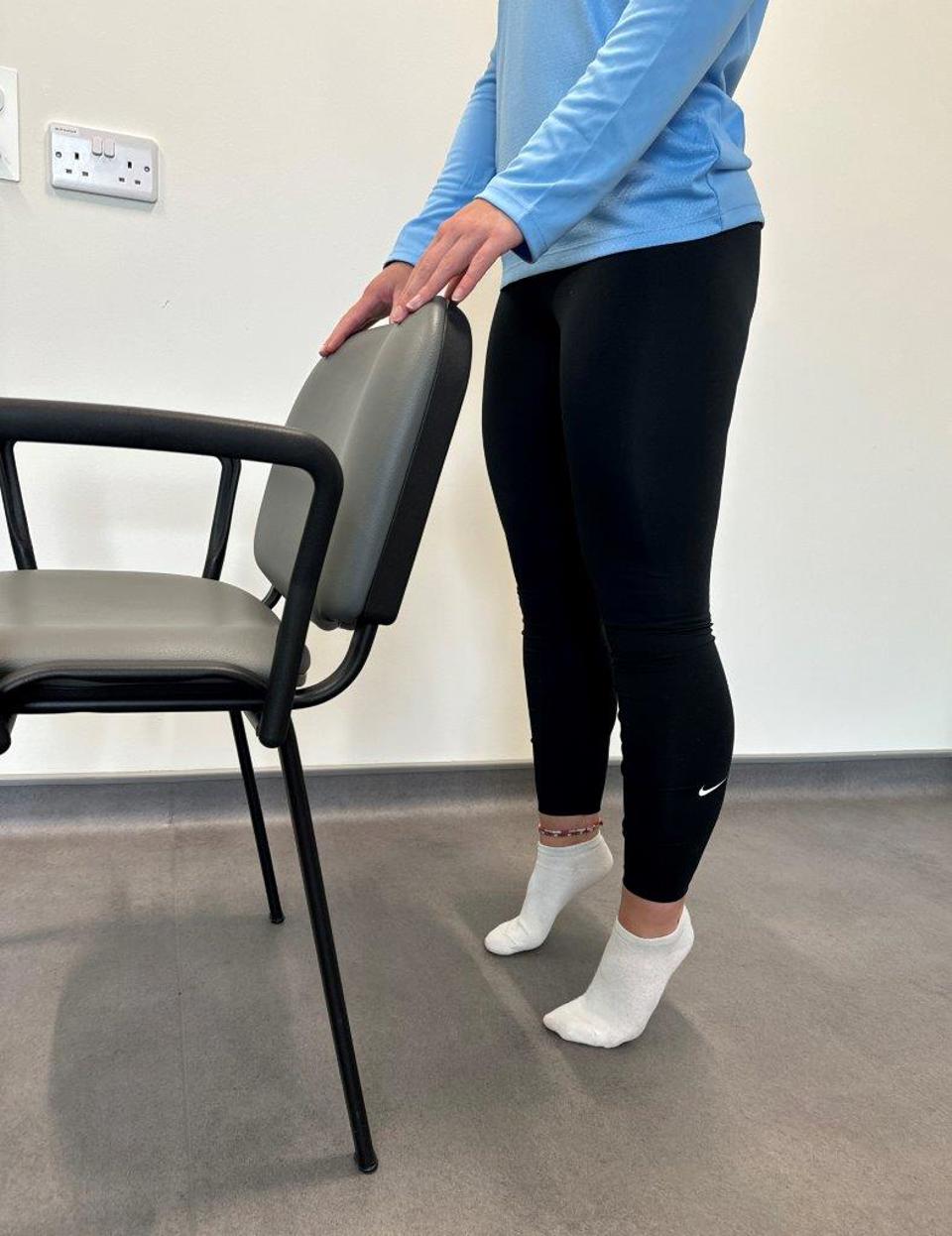
1. This exercise is aimed at strengthening the muscle in your calf and foot. To perform this exercise stand close to a wall, placing your hands against the wall for balance. Raise up slowly onto your tip toes lifting both heels off the ground, when you have raised the heels up as far as you are comfortable with begin to slowly lower the heels back down to the ground. Strengthening exercises should be built up gradually over a period of weeks, so to begin with do as many repetitions as you can manage. The aim is to do 3 sets of around 10 -15 repetitions but remember it may take you several weeks before you are able to reach close to this target.
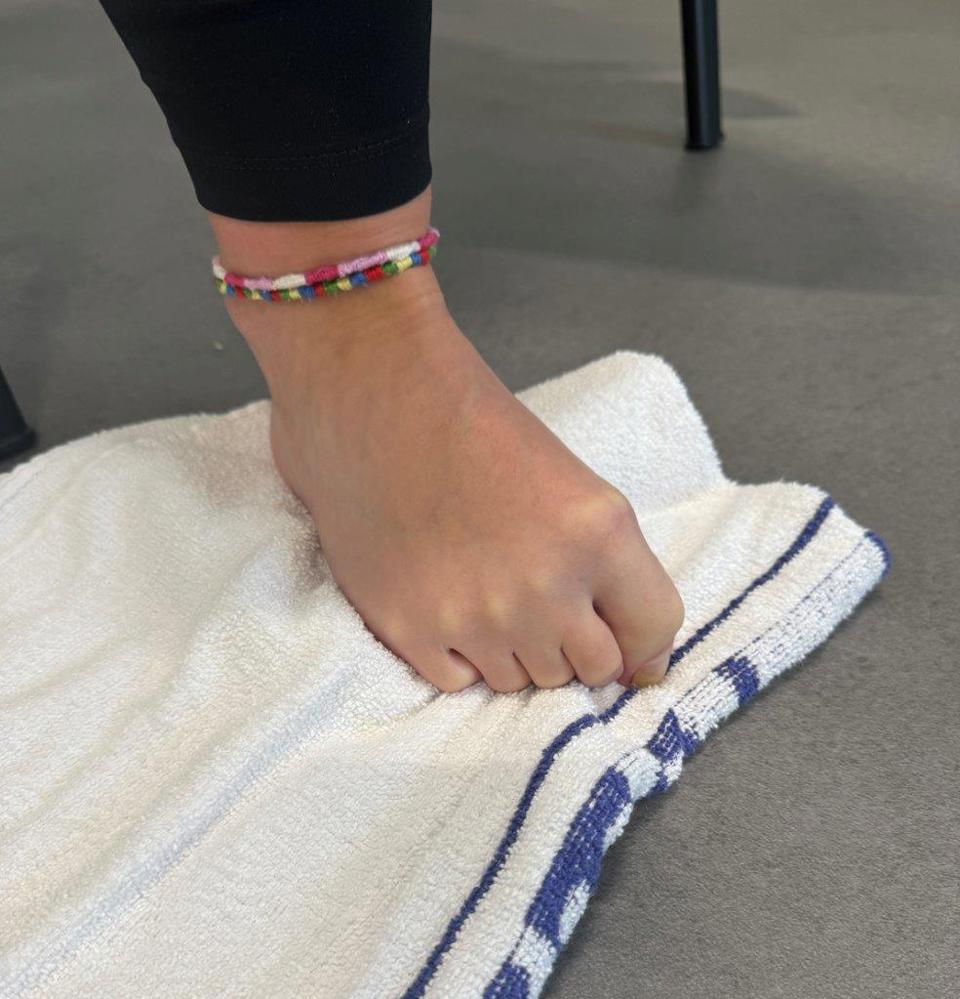
2. This exercise is aimed at strengthening the small intrinsic muscles in the foot. Place a small towel flat on the ground. This exercises is performed in a seated position make sure your back is straight and leg bent comfortably at 90 degrees with your affected foot placed flat on the towel. Use your toes to begin crunching the towel up with the aim of pulling the towel in towards you, do this in a slow controlled manner. When you have pulled the towel in as far as possible straighten it back out again and repeat the process between 3-5 times. Make sure your heel stays in ground contact throughout the exercise.
Massage
Massaging the painful areas gently with your fingers may give pain relief. If there is a specific tender spot, massage this with the pad of your middle finger in a circular motion for 30 seconds.
Alternatively place a golf ball on the floor and gently roll the foot over the ball. Target tender areas and exert enough pressure that you only feel a little tenderness. Massage can be done for 5-10 minutes a day.
Getting back to normal
If working you can self-certify for one week.
Worries or concerns
Should you have any worries or concerns please contact your General Practitioner (GP) during working hours or contact NHS24 on 111 out of working hours.
If you continue to experience problems then you should consult a healthcare professional.
Accessible formats
If you require this information in a community language or alternative format such as Braille, audio, large print, BSL, or Easy Read, please contact the Equality and Human Rights Team at: email: fife.EqualityandHumanRights@nhs.scot or phone 01592 729130. For people with a hearing or verbal impairment you can also contact the team through the NHS Fife SMS text service number on 07805800005.




